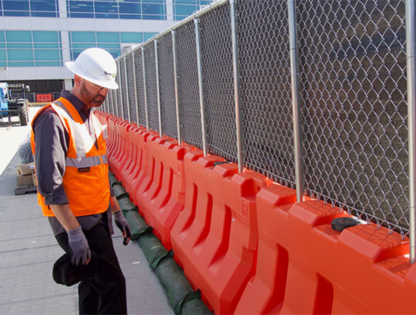Construction sites are dynamic and demanding environments, but they can also be dangerous. Ensuring worker safety is crucial with risks ranging from falls to equipment malfunctions. A safe construction site protects lives, improves efficiency, and reduces costs. Here’s how you can make your construction site safer for everyone.
Understanding Common Hazards on Construction Sites
Construction work involves many potential dangers. Here are the most common hazards that workers face:
- Falls from Heights:
Falling is the leading cause of construction injuries. Workers often need to work on scaffolding or unprotected edges, increasing the risk.
- Equipment Issues:
Faulty tools or improper use of machinery can cause severe injuries or even fatalities.
- Exposure to Harmful Substances:
Dust, asbestos, and other chemicals are common on construction sites and can lead to respiratory problems or skin conditions.
- Electrical Risks:
Accidental contact with live wires or faulty equipment can result in shocks or electrocution.
By understanding these risks, construction teams can better plan to avoid them.
Why Personal Protective Equipment (PPE) Is Essential
One of the easiest ways to prevent injuries is by using personal protective equipment (PPE). PPE is designed to protect workers from site hazards and should always be a priority.
Here are the must-have PPE items for construction workers:
- Helmets: To shield against head injuries from falling objects.
- Gloves: To protect hands from sharp edges, tools, and chemicals.
- Safety Boots: To guard feet from heavy objects, punctures, and slippery surfaces.
- Goggles or Face Shields: To keep eyes safe from dust, sparks, and harmful substances.
At Emtek, we offer durable, high-quality PPE that meets industry standards. Our helmets, gloves, and boots are designed for tough construction conditions, combining safety with comfort.
Keeping Tools and Equipment Safe
Tools and equipment play a significant role in construction. When tools are in good condition and used correctly, they not only improve productivity but also ensure safety. Here’s how to maintain tool safety:
- Regular Inspections:
Check tools and machinery often. If you spot any issues like worn-out blades or loose fittings, address them immediately.
- Using the Right Tool for the Job:
Always use tools designed for the specific task. For example, Emtek’s cutting and grinding discs are made for different materials like concrete and steel, ensuring both efficiency and safety.
- Training Workers:
Ensure workers are trained to handle tools properly. They should know how to operate machinery and use safety features to prevent accidents.
Investing in high-quality tools, like those from Emtek, reduces downtime and improves site safety.
Training: The Foundation of a Safe Workplace
Even the best tools and equipment won’t help if workers aren’t trained in safety protocols. Training builds awareness and confidence, which reduces accidents and ensures smooth operations.
Here’s how to make training effective:
- Safety Drills:
Regularly practice drills for emergencies like falls, fires, or equipment malfunctions. This prepares workers to act quickly when needed.
- Daily Toolbox Talks:
Start each day with a brief safety discussion. Highlight topics like handling materials, using tools properly, or spotting potential risks.
- Encouraging Accountability:
Create an open culture where workers feel comfortable reporting unsafe practices or hazards.
When everyone on-site understands their role in maintaining safety, the risk of accidents drops significantly.
Organizing the Worksite for Safety
A well-organized construction site is a safer one. Clutter, poor signage, and improper storage are often overlooked causes of accidents. Here are some tips to keep the site in order:
- Clear Pathways: Ensure pathways are free of obstacles to prevent trips and falls.
- Proper Storage: Store tools and materials safely to reduce the risk of accidents.
- Use Signage: Place clear warning signs around hazardous areas to alert workers.
Good organization creates a safer, more productive environment.
Be Prepared for Emergencies
Emergencies can happen even on the safest sites. Having a plan in place can make all the difference. Here’s what to include:
- Emergency Response Plan: Create a clear, easy-to-follow plan for handling accidents or hazards.
- Training for Emergencies: Teach workers how to respond to injuries, falls, or fires.
- First Aid Kits and Equipment: Ensure first aid supplies and fire extinguishers are accessible and easy to use.
Preparedness saves lives and minimizes damage during unexpected events.
Using Technology to Enhance Safety
Modern tools and technology can further improve construction site safety. From precision-engineered tools to software that monitors safety protocols, technology can be a game-changer.
At Emtek, we focus on creating durable and reliable tools that improve performance while enhancing safety. For example, our cutting discs are designed for specific materials, reducing the risk of accidents caused by tool misuse.
Conclusion
Safety on a construction site is not optional—it’s a necessity. By understanding hazards, using the right PPE, maintaining tools, providing proper training, and staying prepared, you can significantly reduce risks. At Emtek, we’re committed to helping construction professionals create safer worksites with our high-quality tools and safety equipment.
Let’s work together to build a safer future—one tool and one project at a time. Explore Emtek’s product range today and ensure your site is as safe as it is productive.
